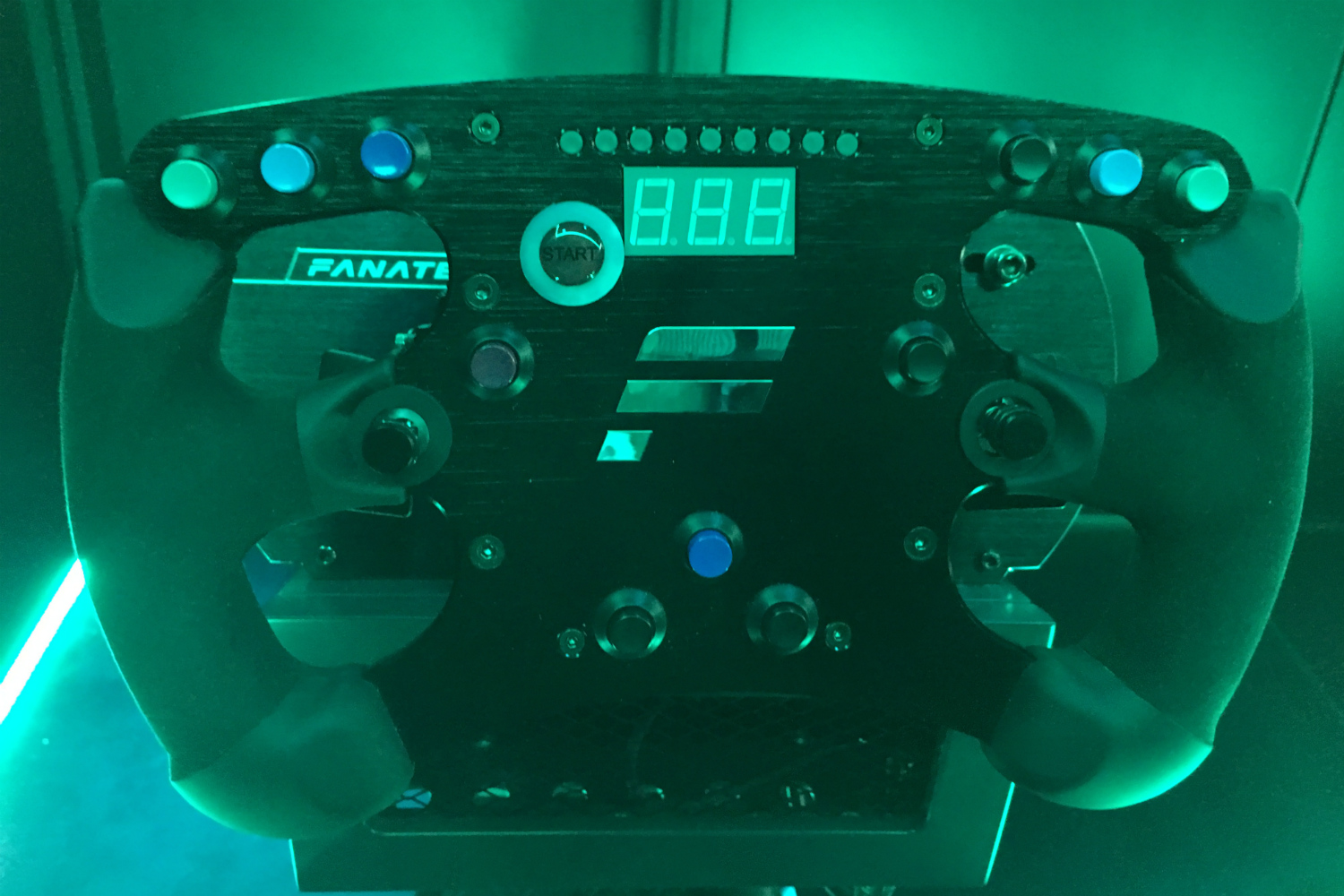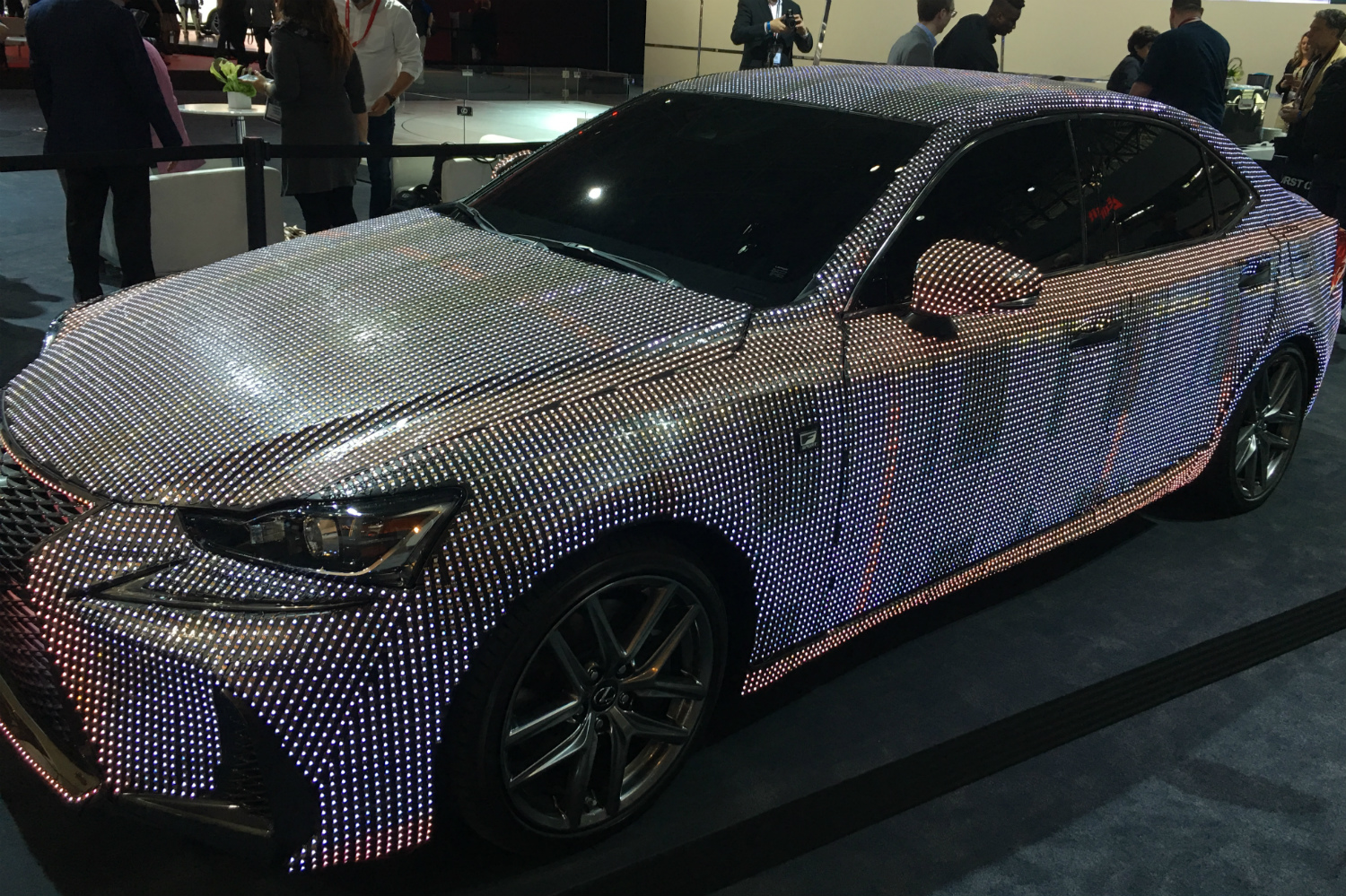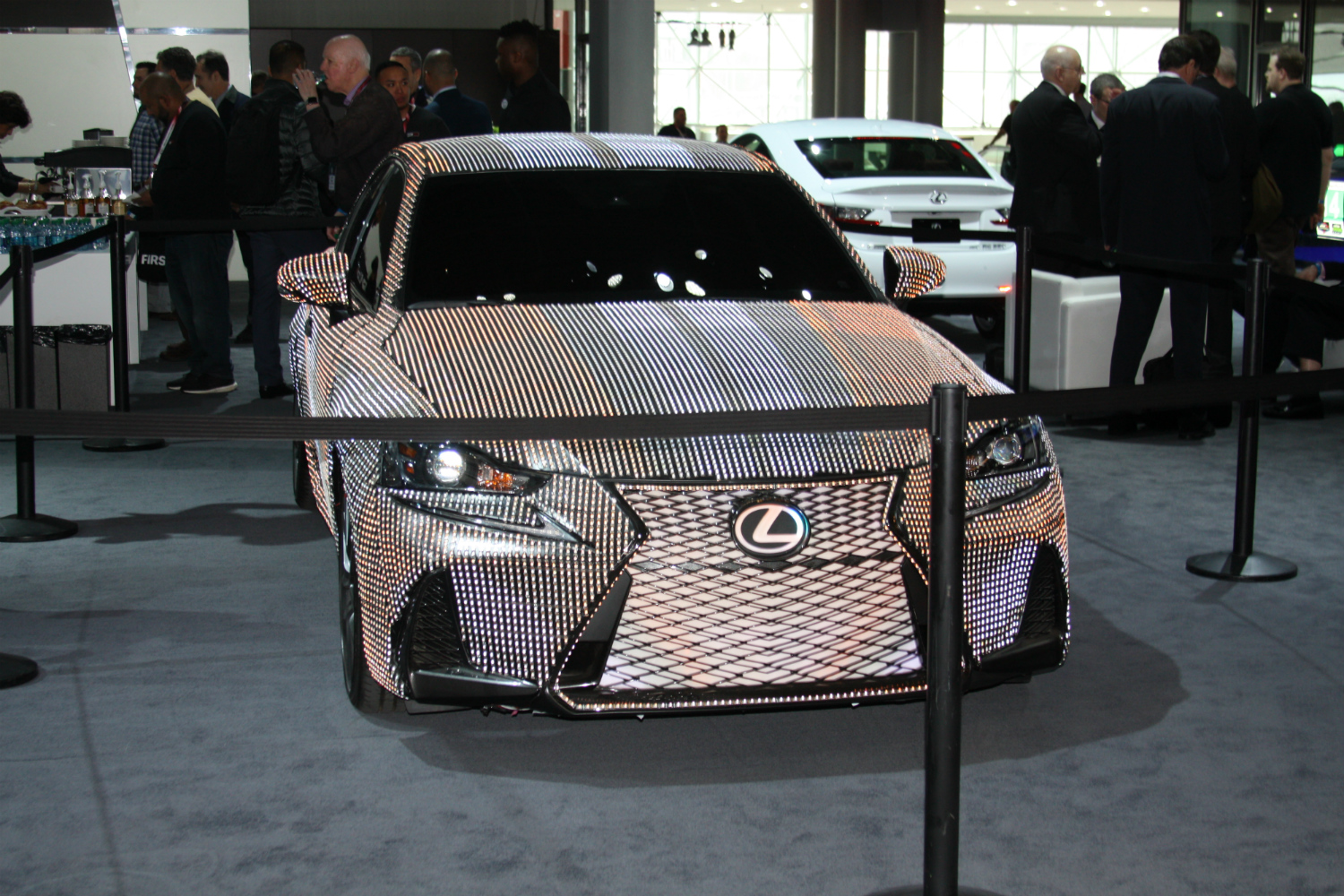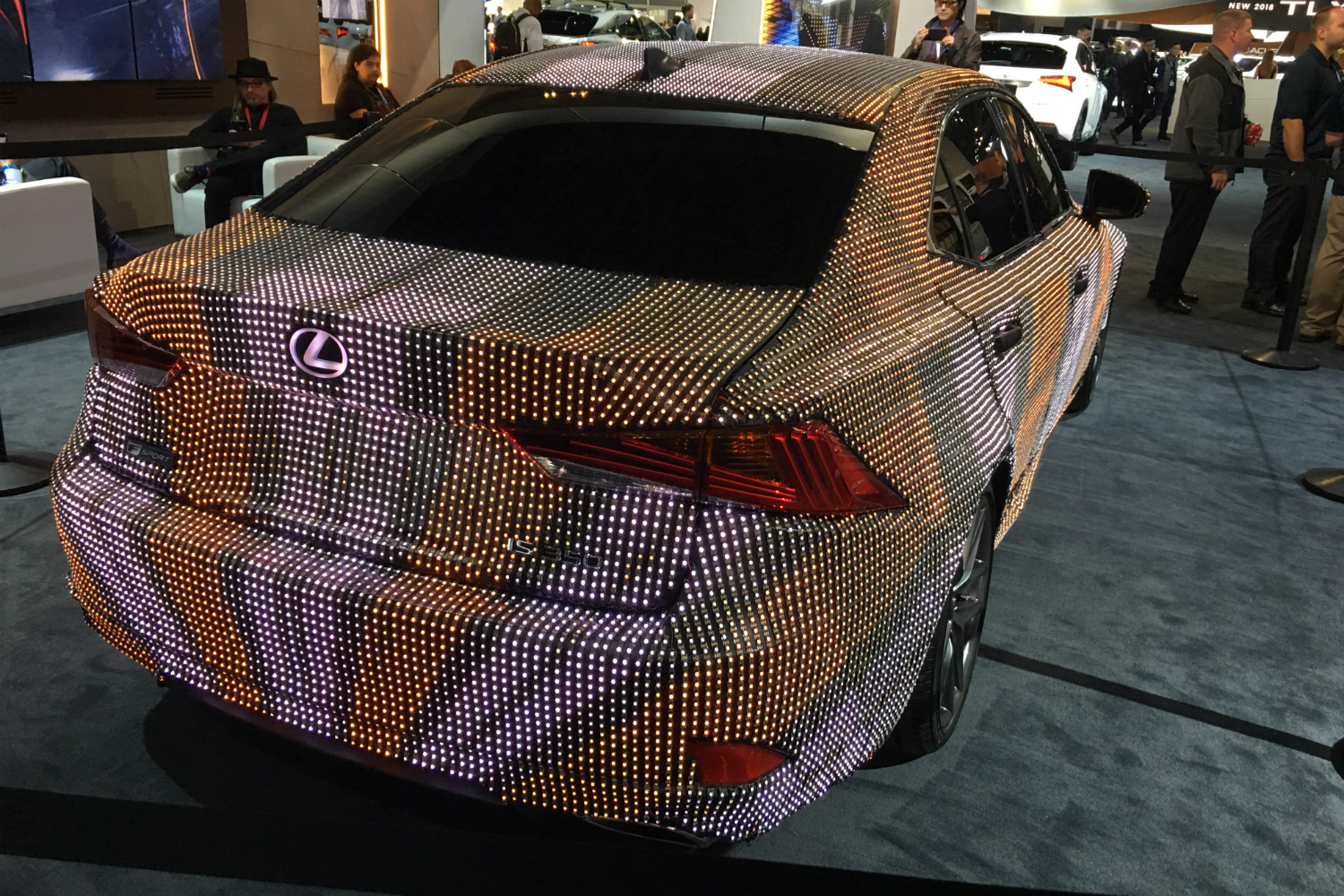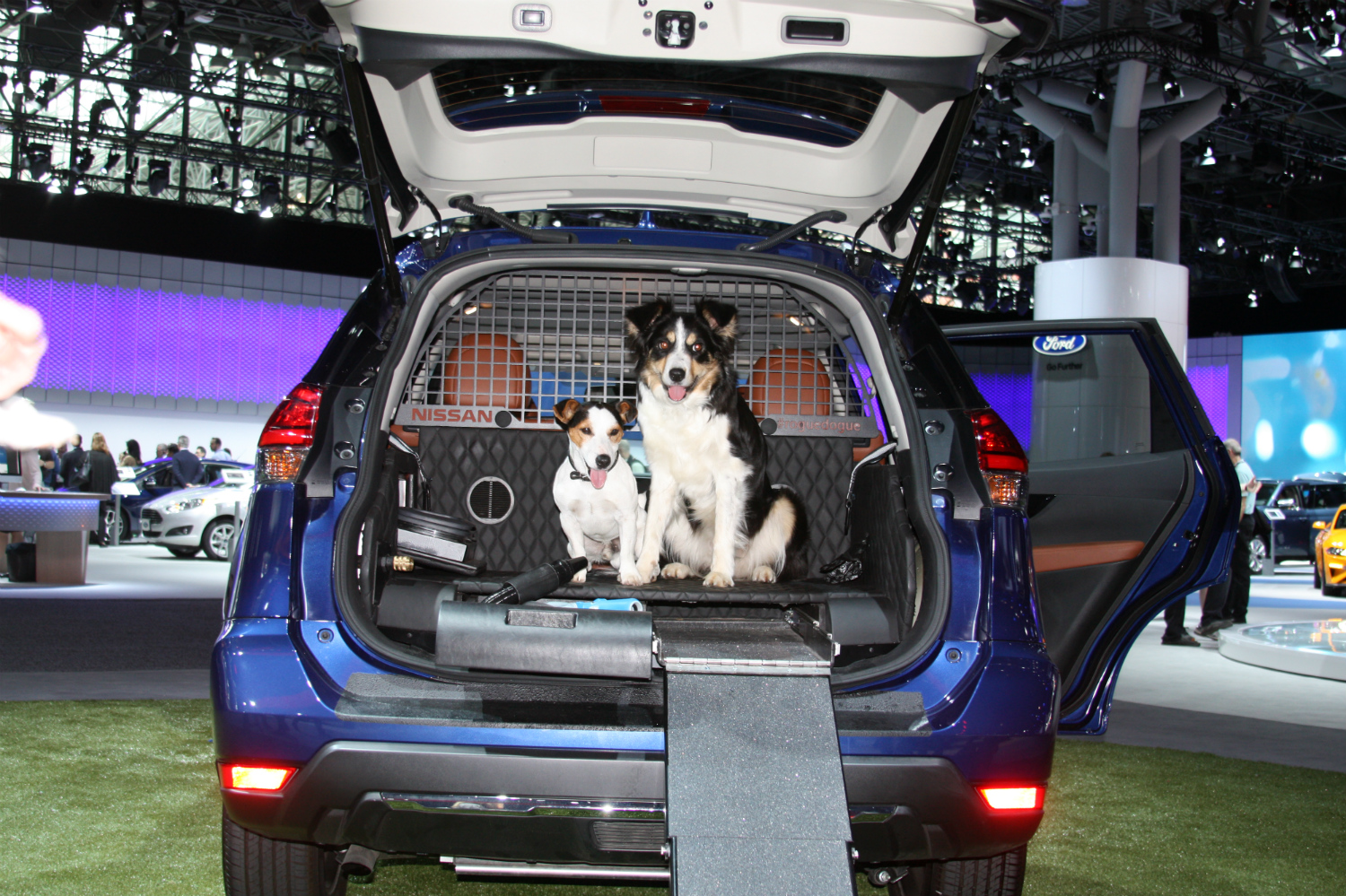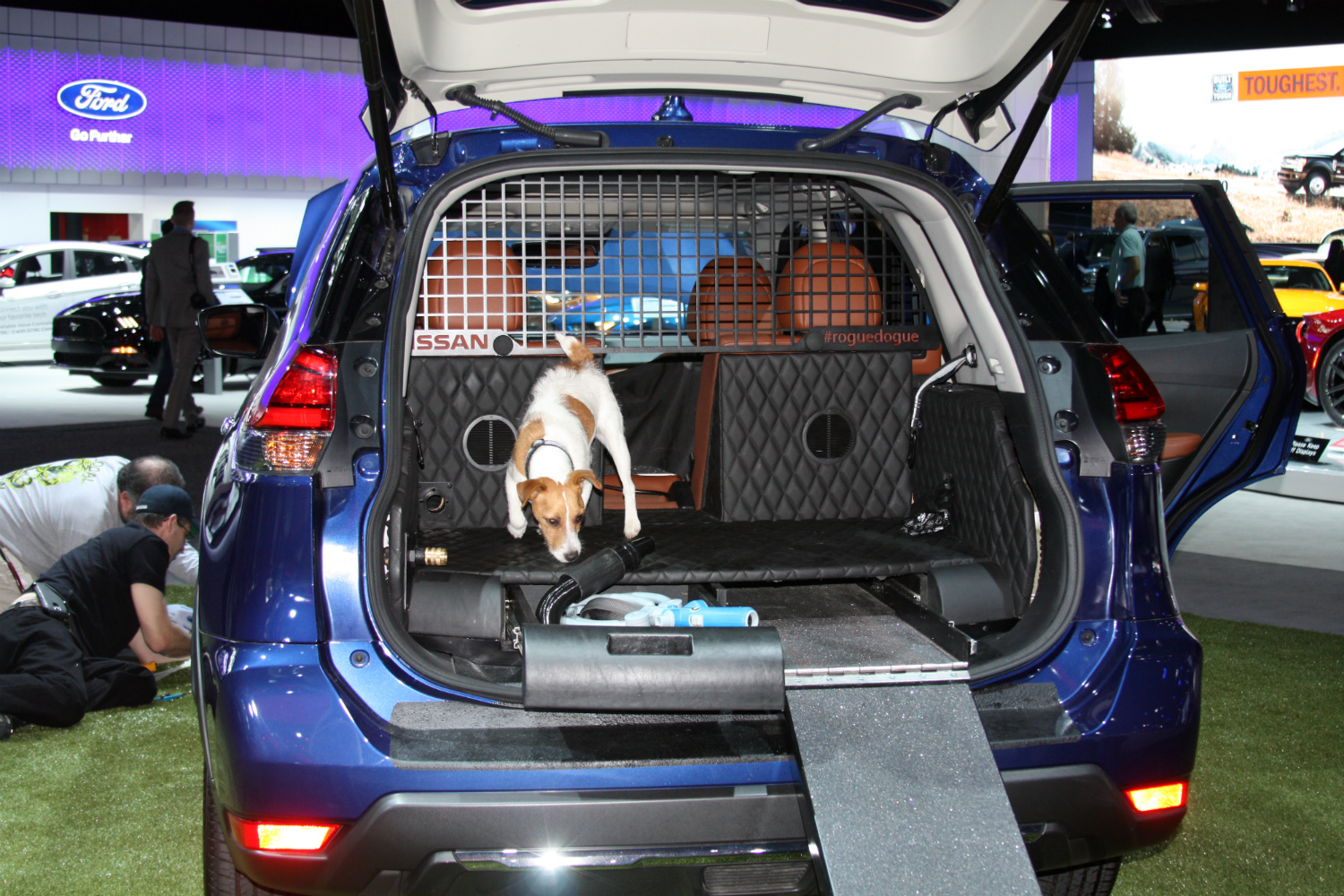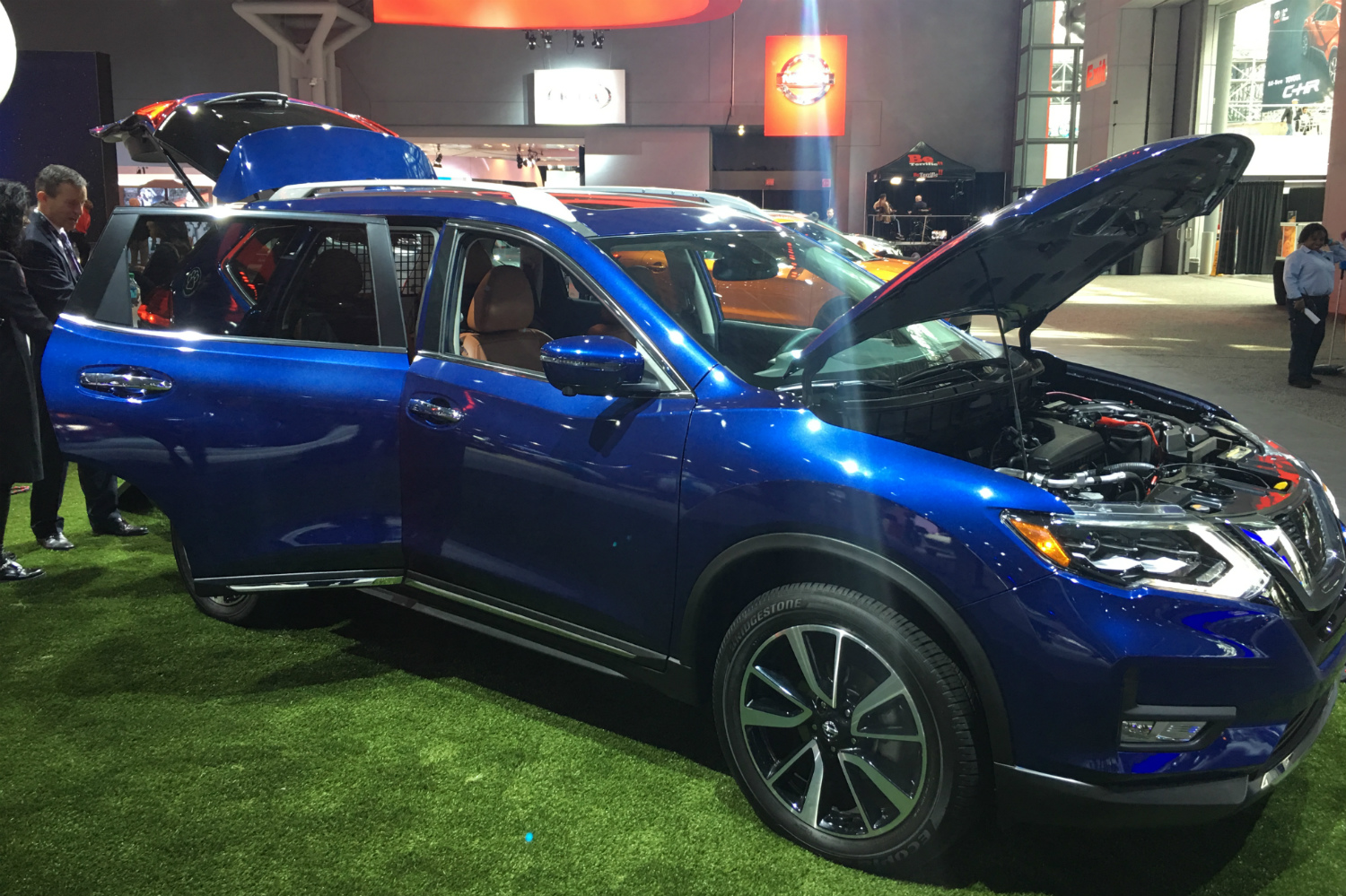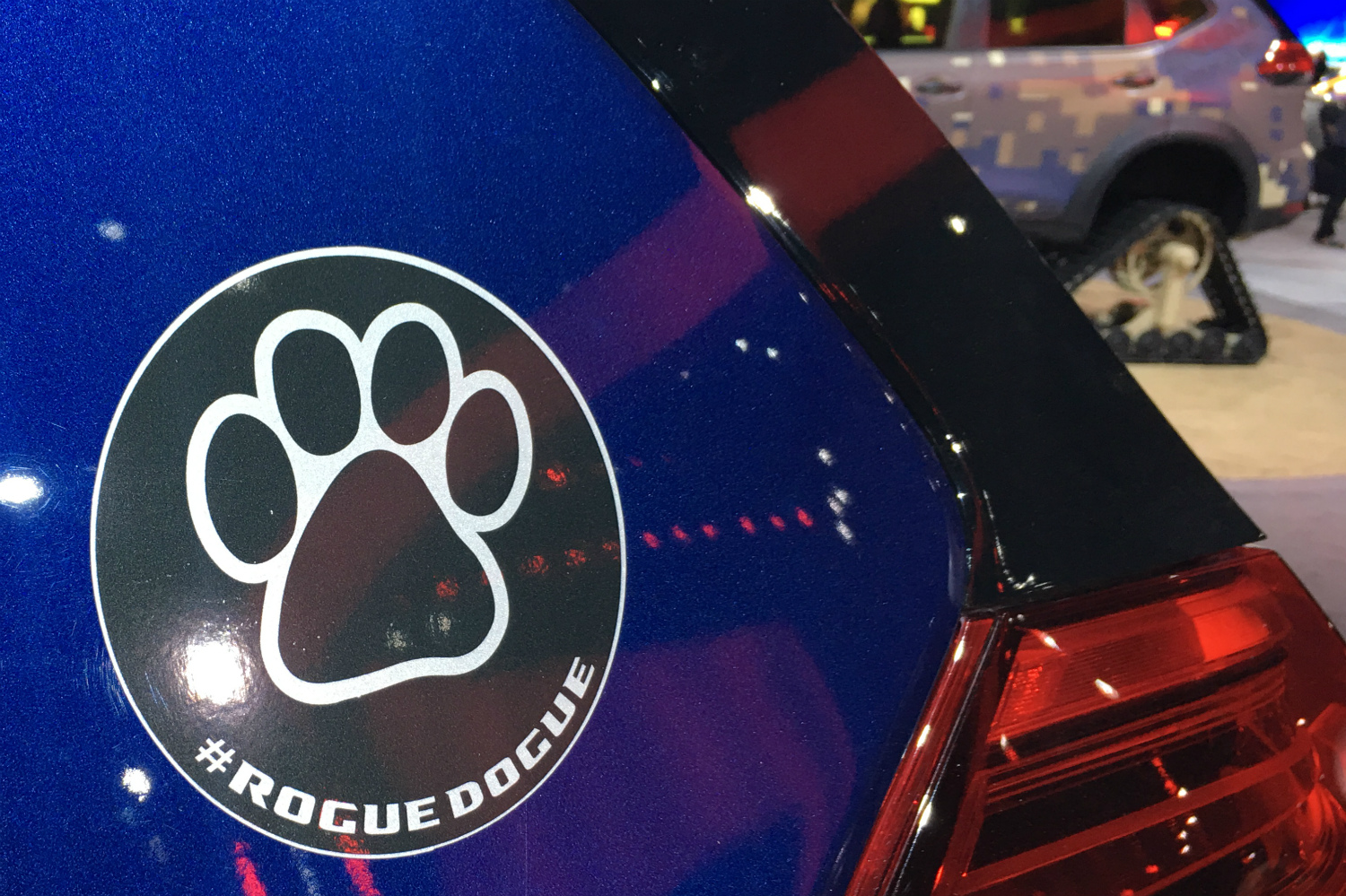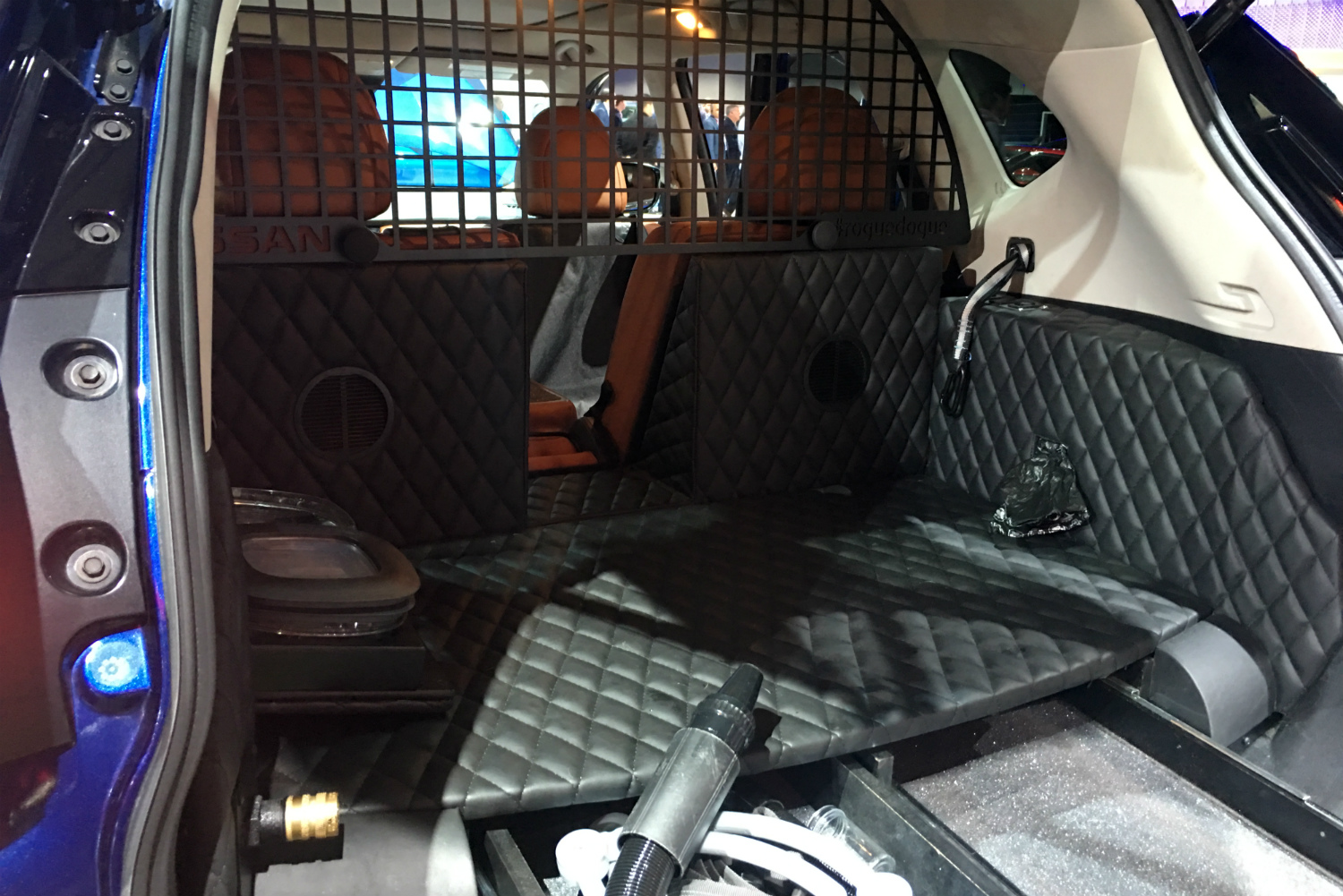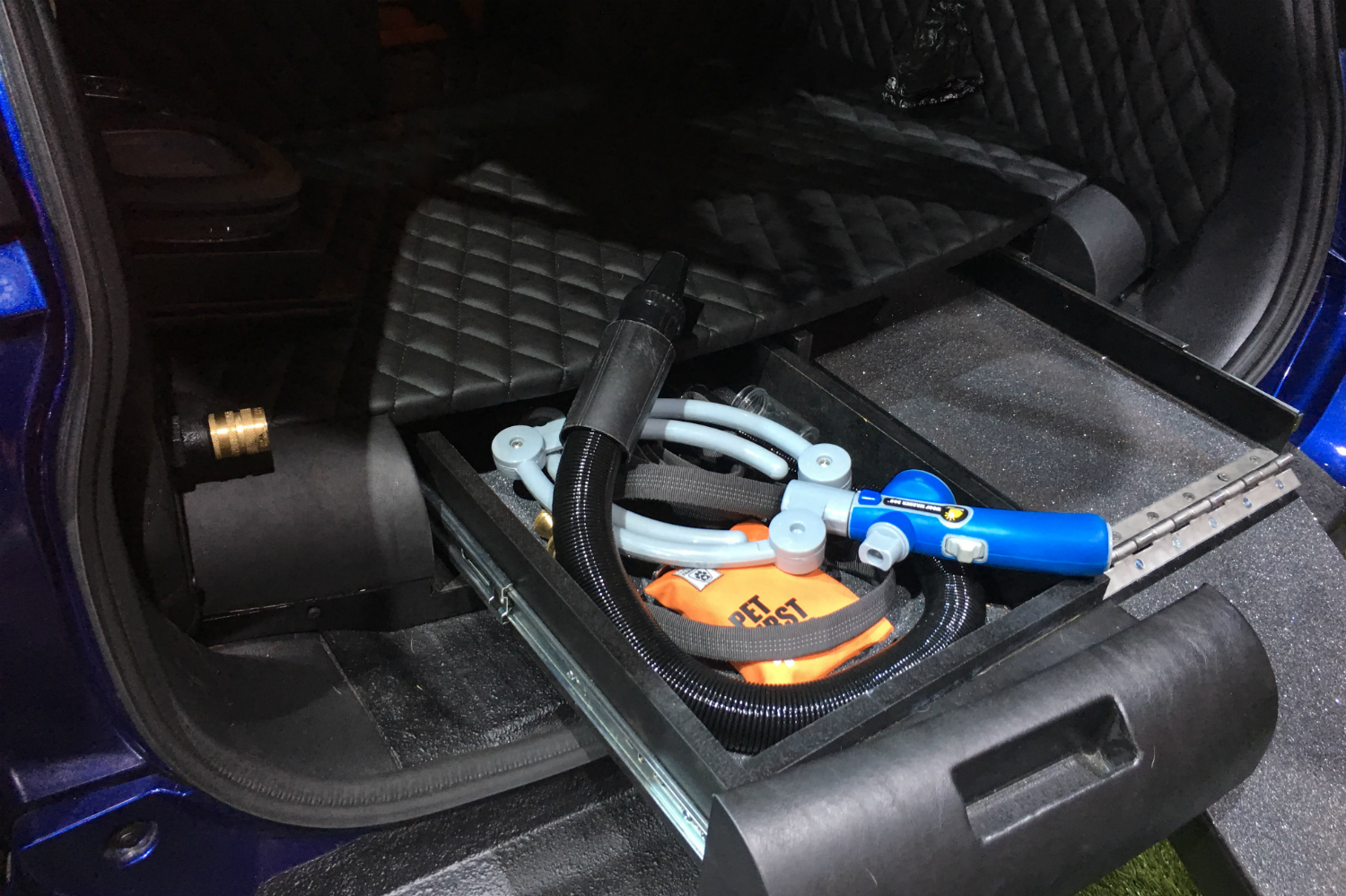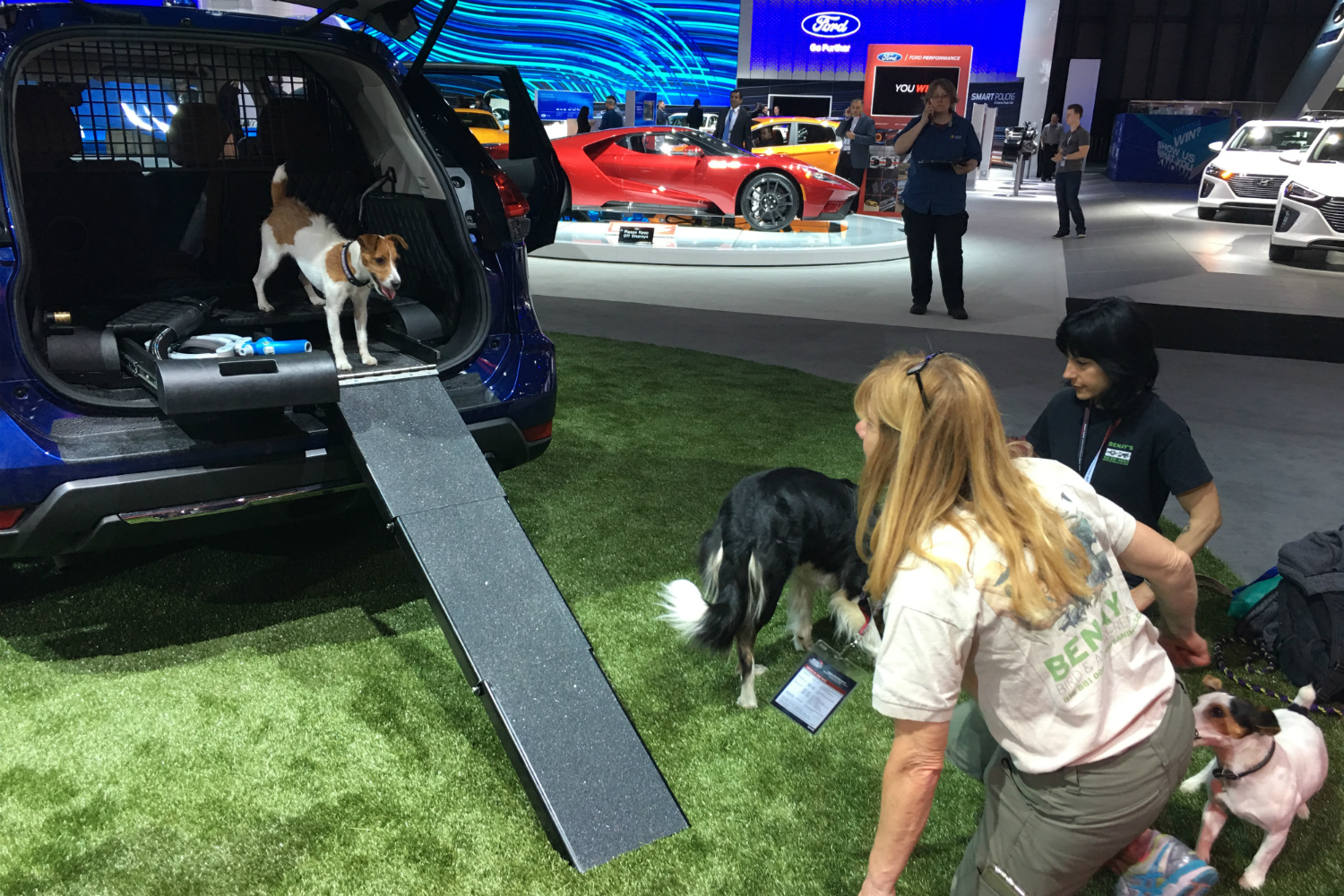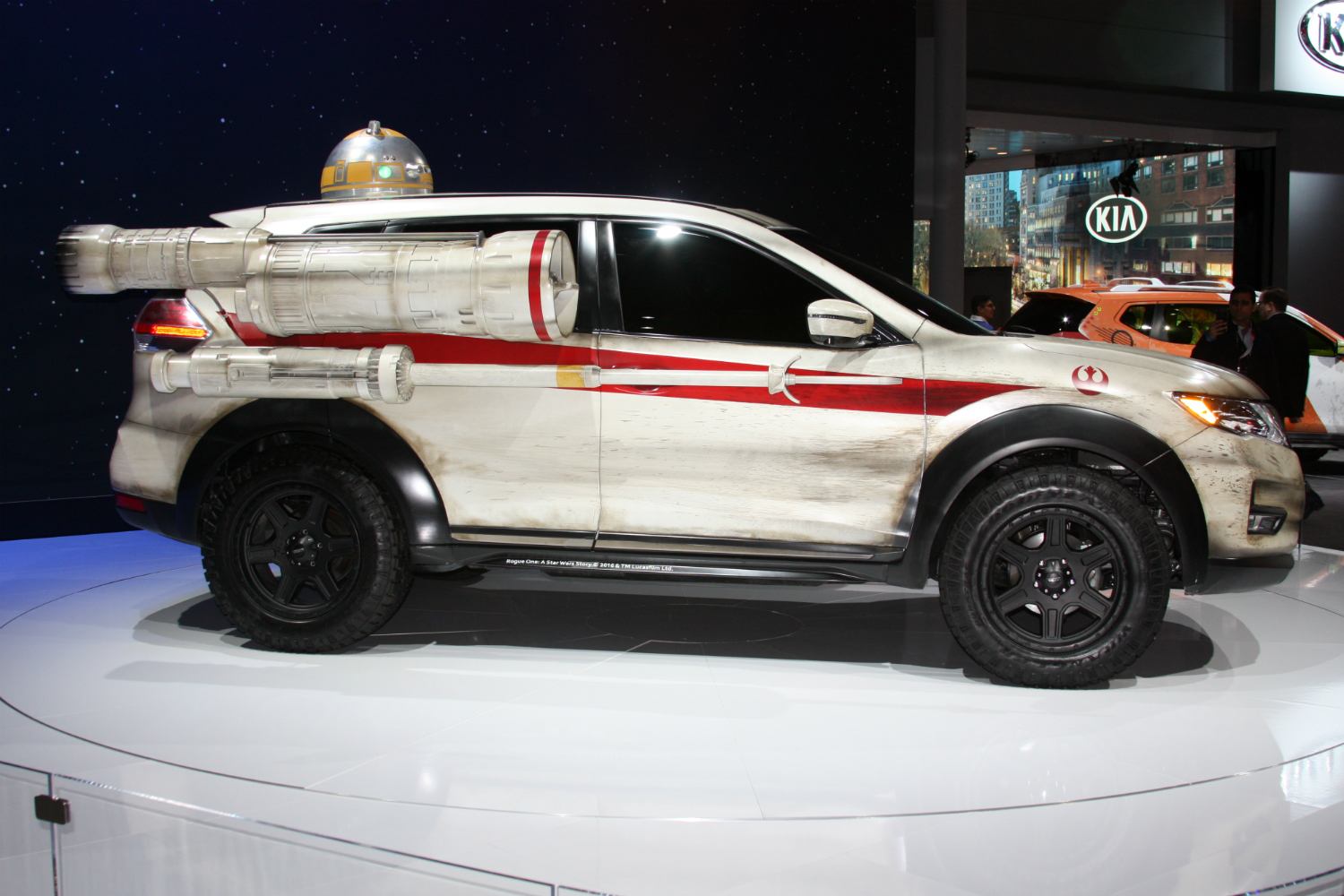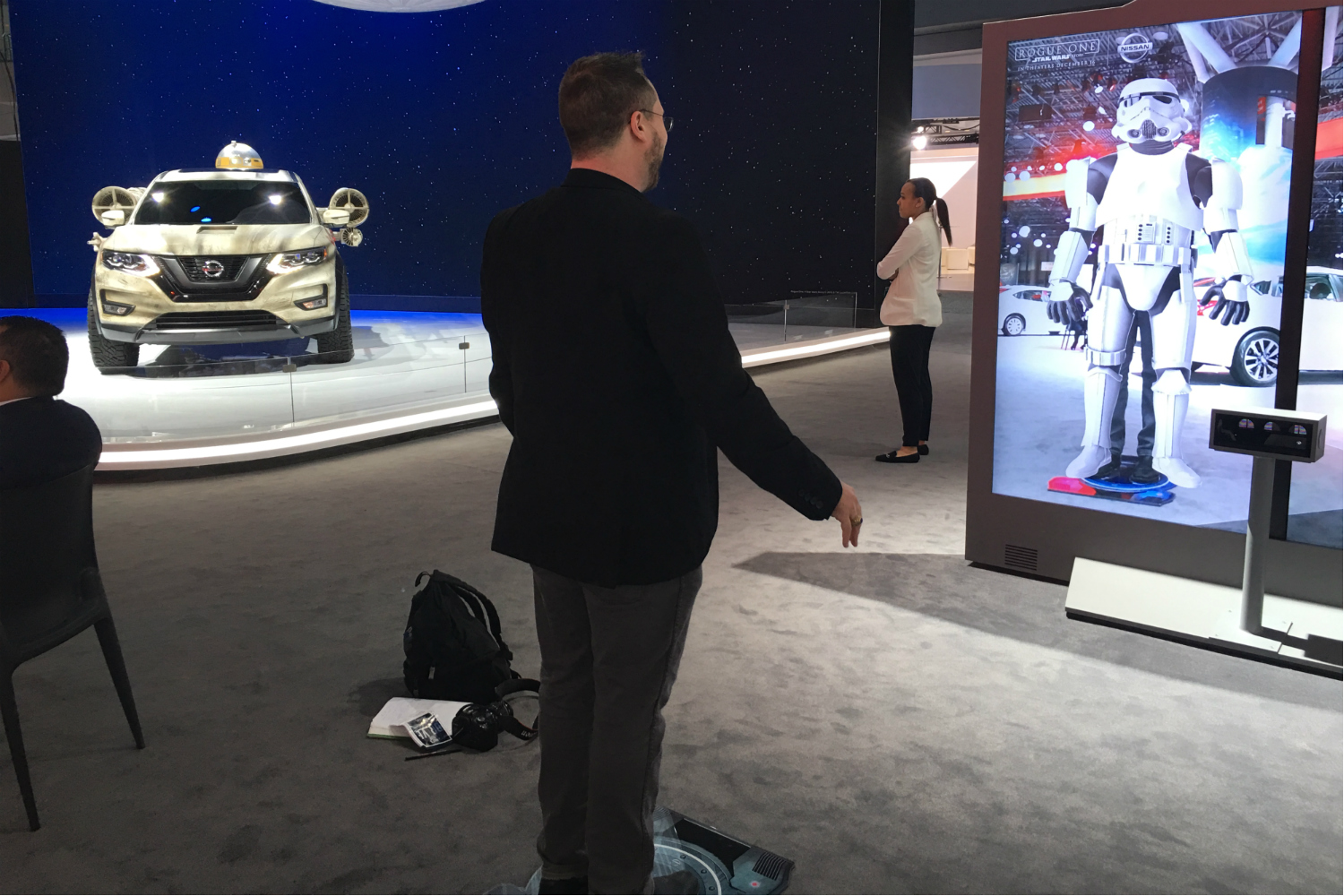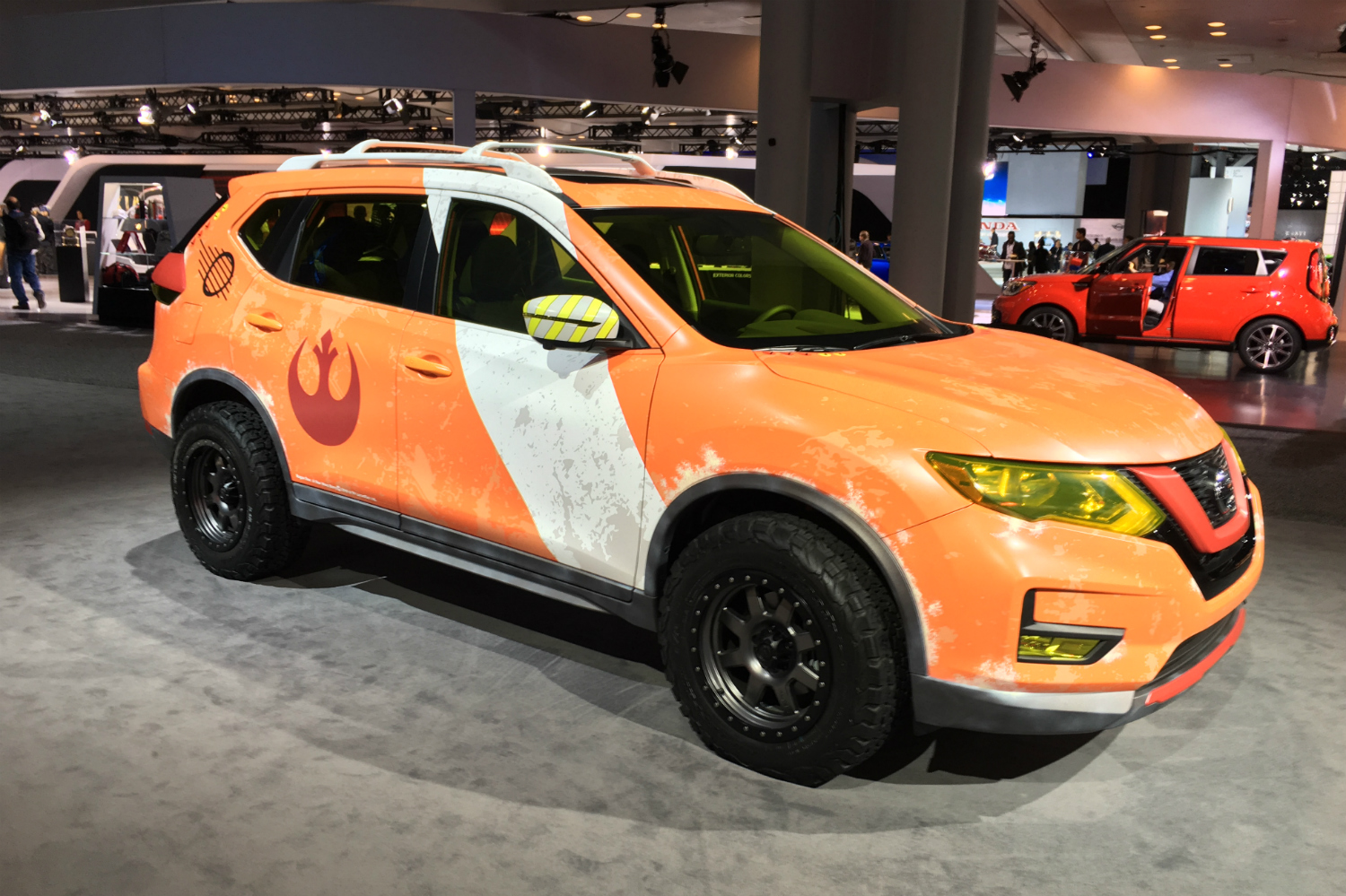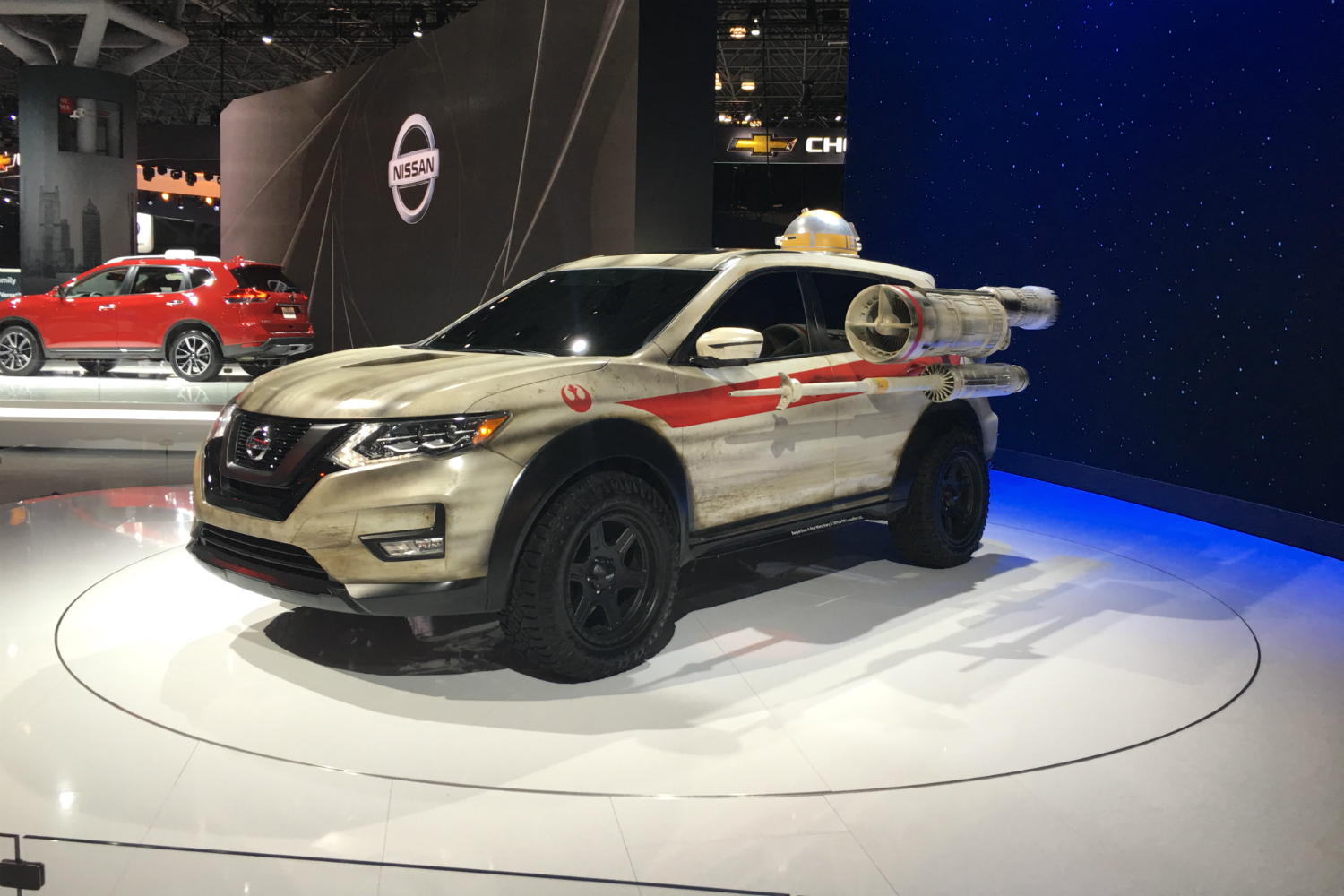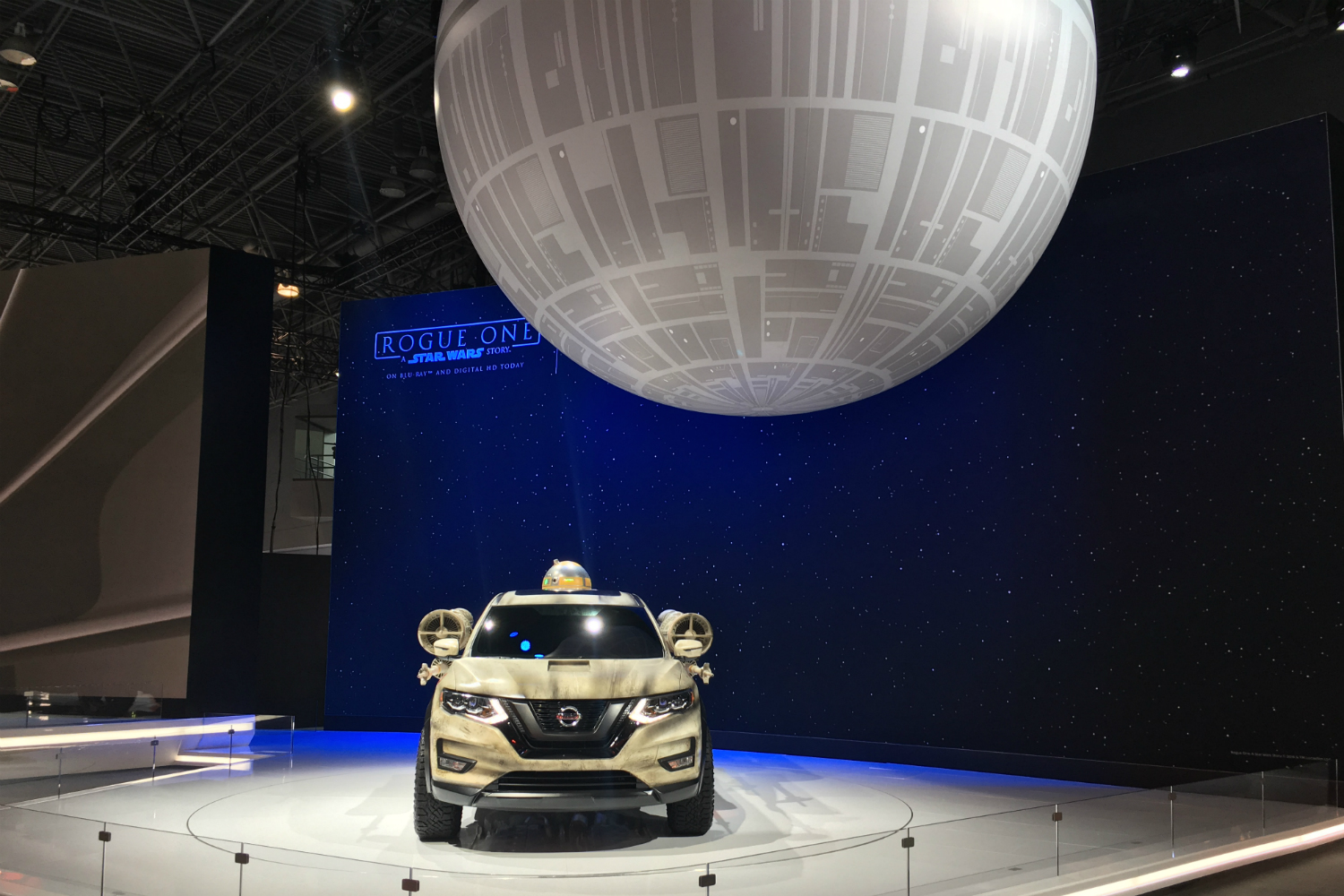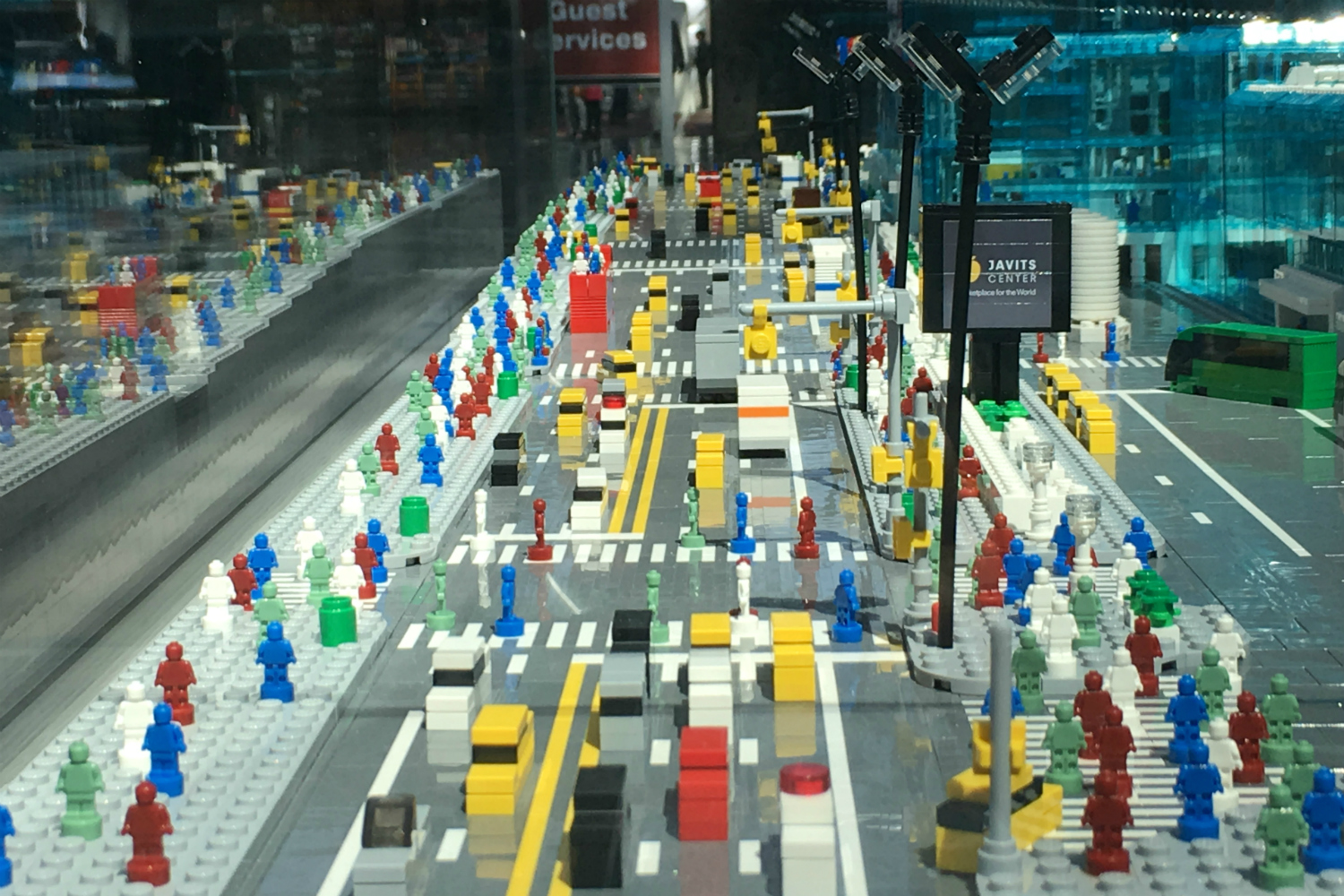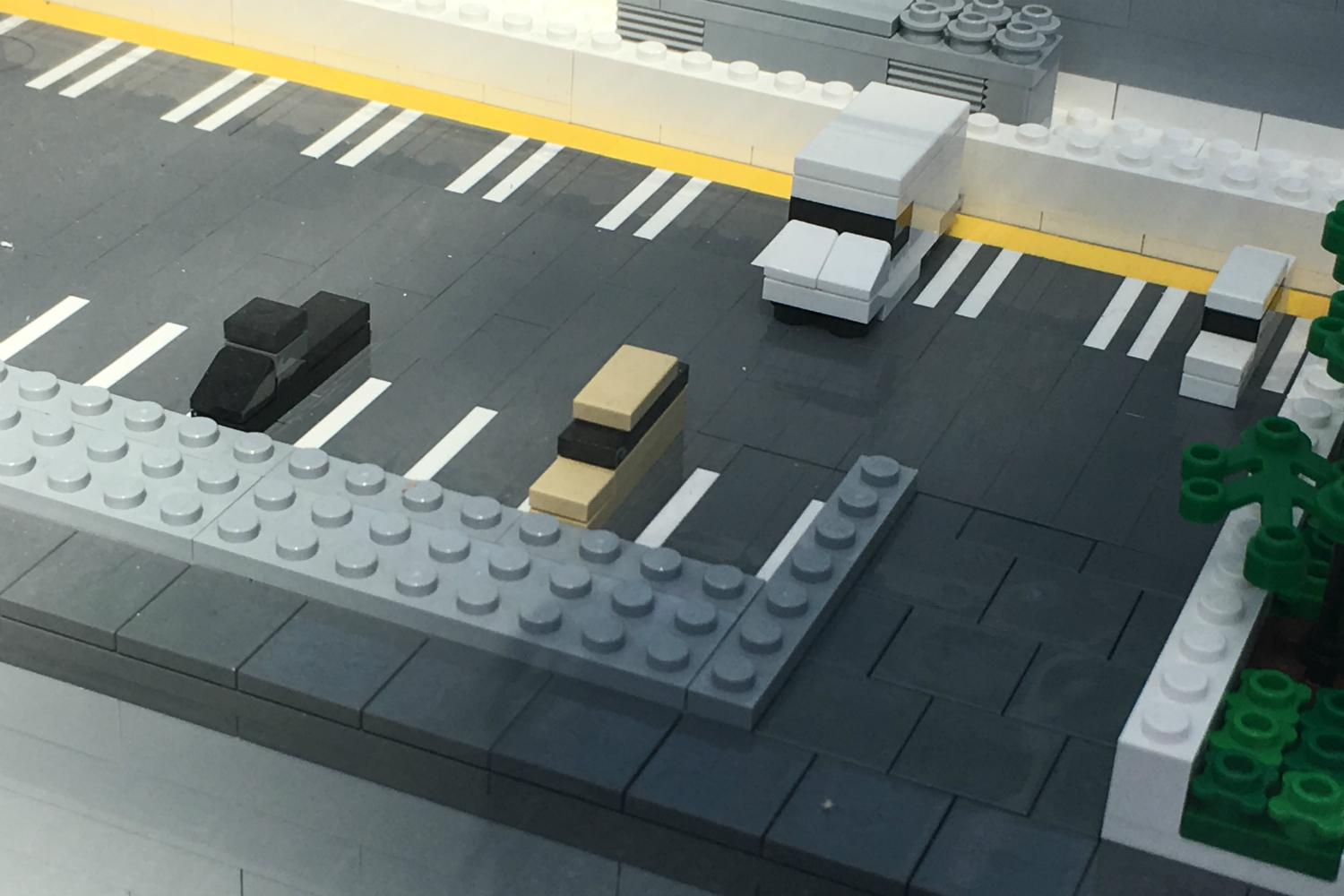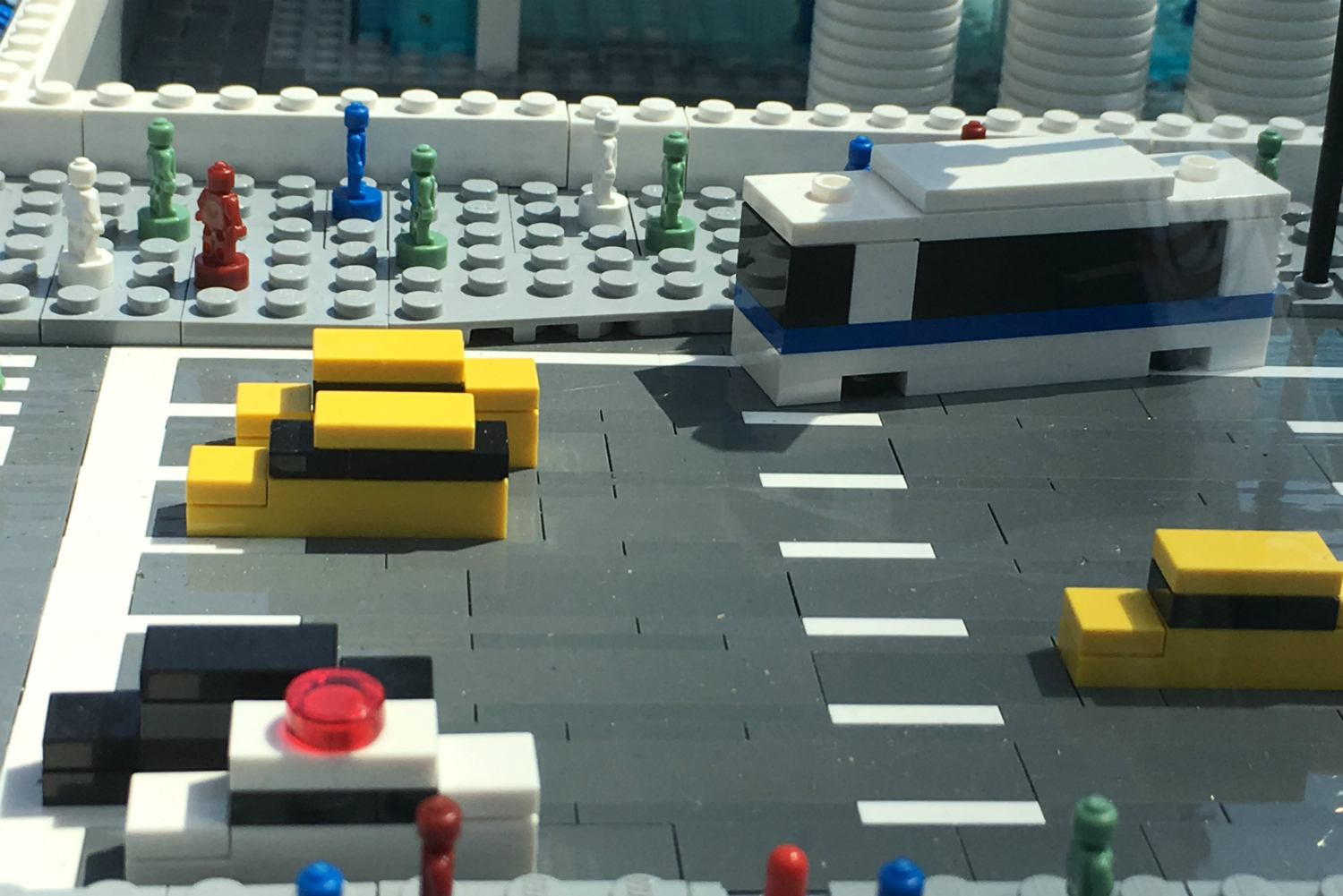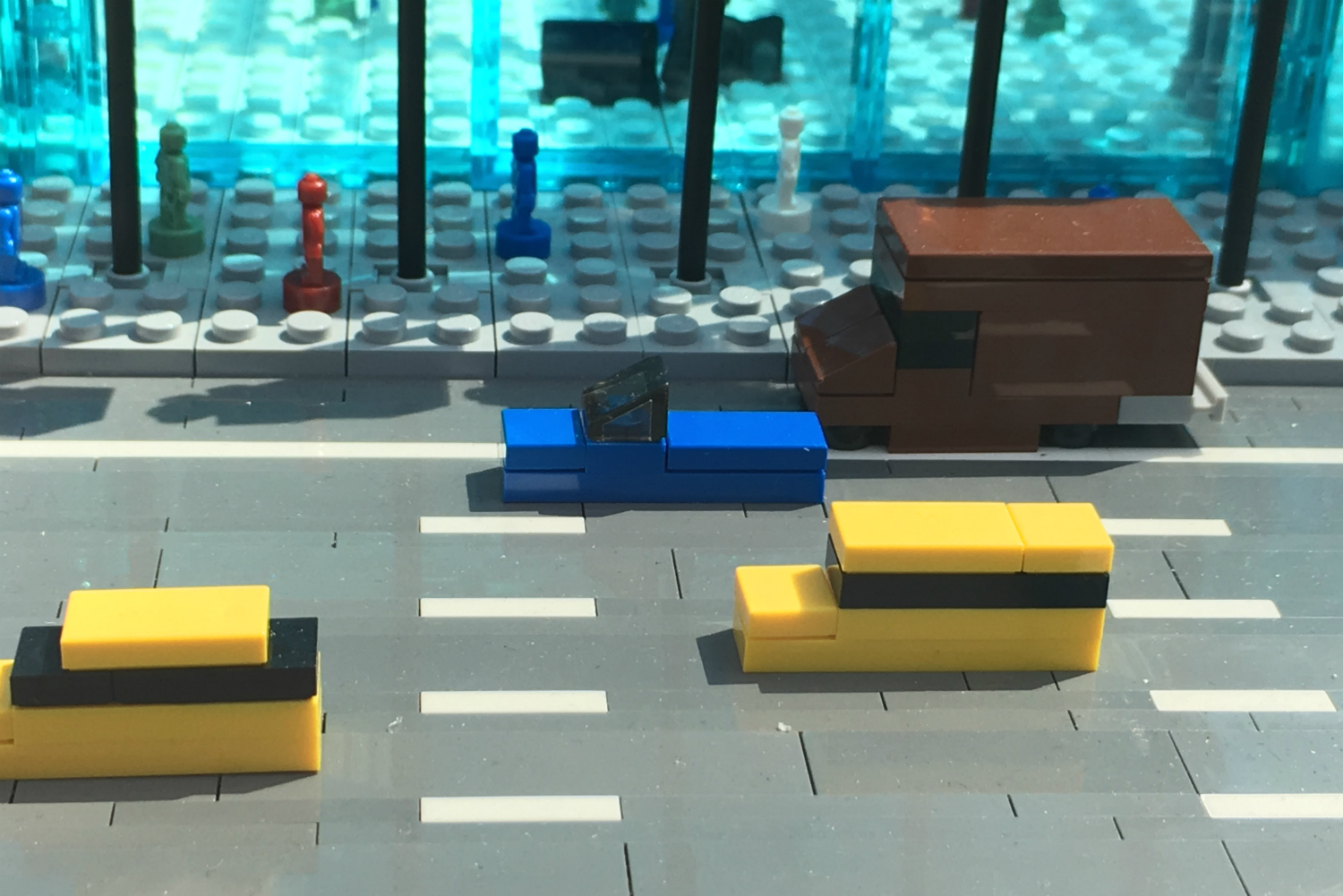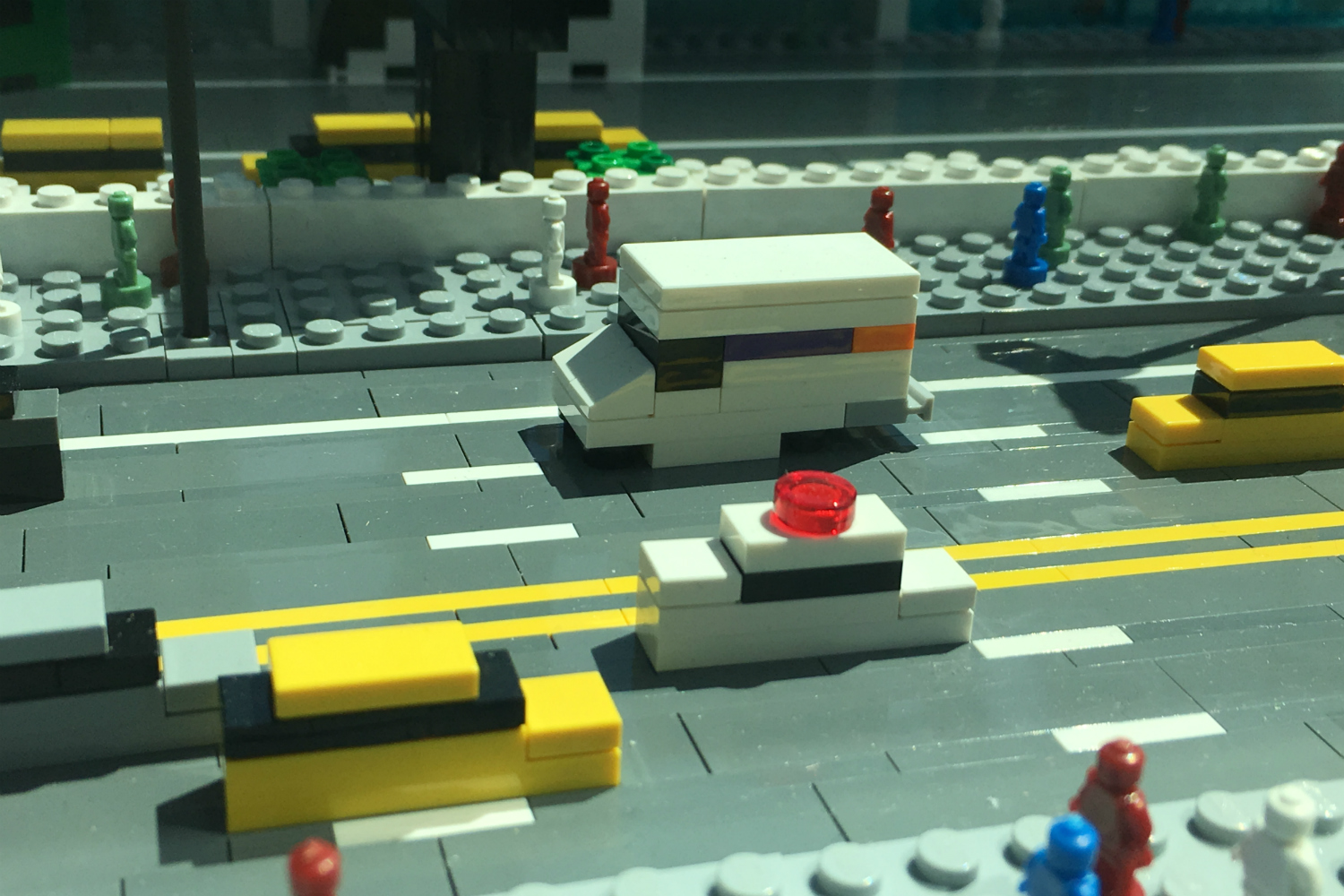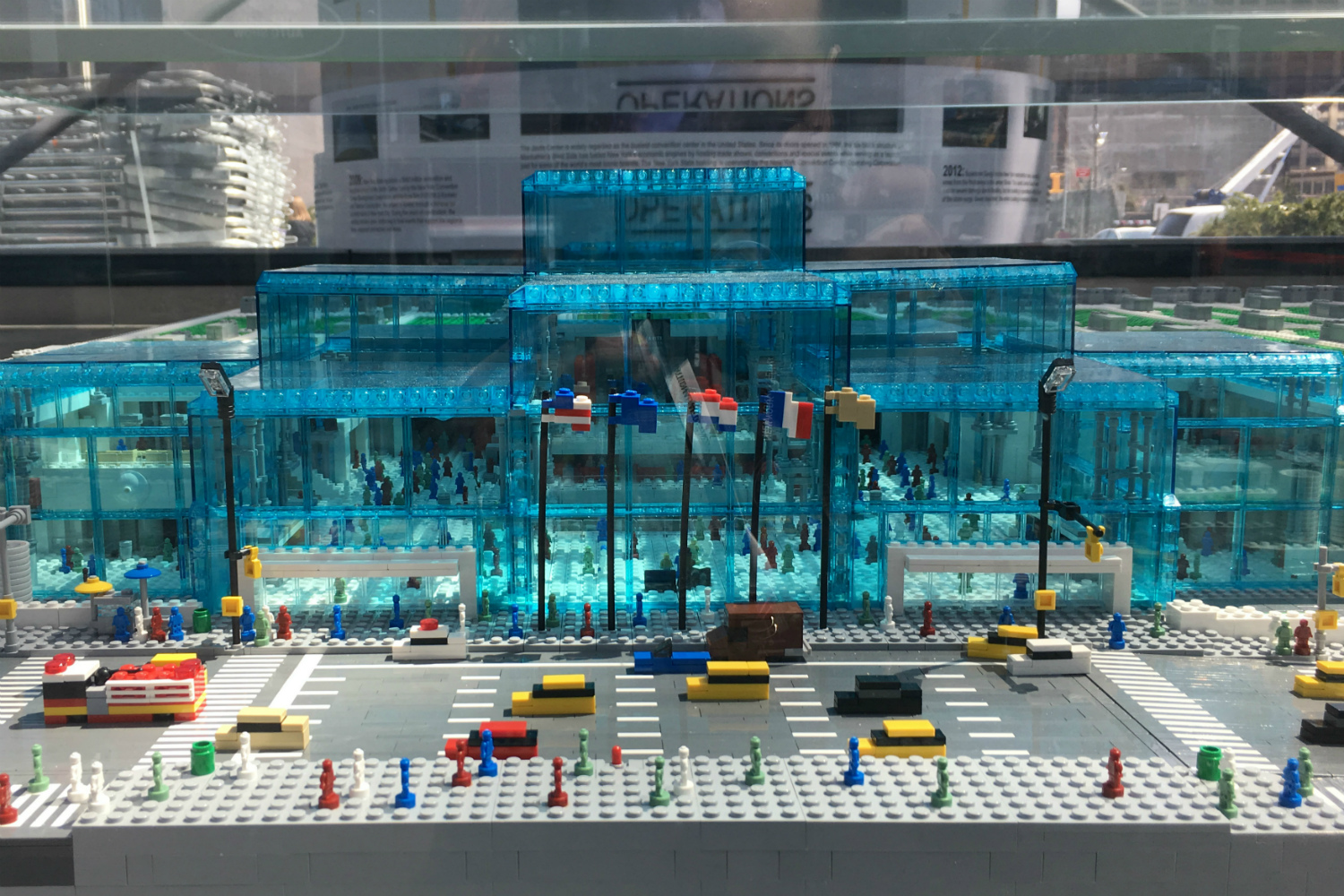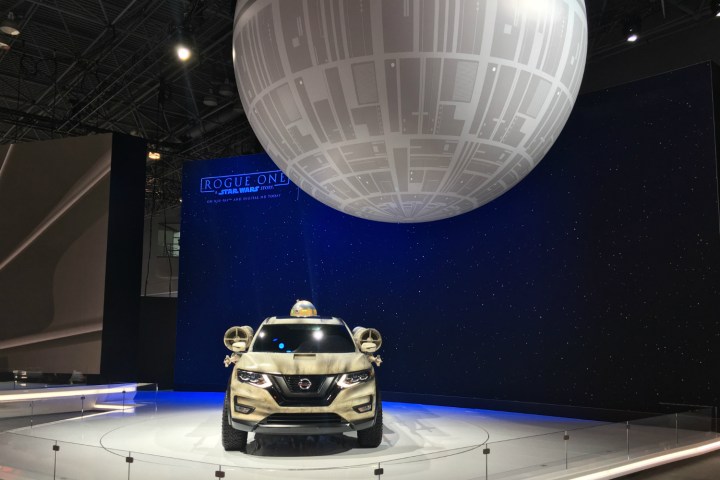
Acura
Acura commissioned the Spinifex Group studio to create an interactive VR experience for the new NSX. We donned an Oculus Rift headset and headphones and tried it out. After picking a paint job for our NSX, we set out on a virtual course.
The cool thing about this VR experience was that it simulated our hands via some unseen tracking device, as we weren’t holding any controllers, just a steering wheel. Beyond that, it was basically all about putting the pedal to the metal and speeding towards the end of the demo. Though the driving experience itself was a simple one, the level of detail inside the car was impressive enough that we had a hard time keeping our eyes on the road.
Chevrolet
Tech Studio Robot Car
Among the attractions at Chevrolet’s Tech Studio was a small maze with radio-controlled cars. Armed with a Logitech controller, we guided a small car that could drive in any direction to a parking spot. Following this, the technician set up the vehicle to drive itself, and it admittedly did a better job.
This exhibit demonstrates the growing self-driving technology making its way into cars, with the Chevrolet Bolt set to become GM’s first autonomous production vehicle.
Jaguar
Formula E
Jaguar recently threw its hat into the Formula E series, and it brought the experience to the auto show via virtual reality. Teaming up with digital production studio Rewind, Jaguar offers a 4D racing simulation that puts you in the driver’s seat of one of these insanely fast electric race cars — they can hit 60 mph from zero in 2.9 seconds.
Physical fans simulate the wind in your face and a rumble-seat system reacts to road conditions. The force feedback Formula One-style wheel lent greater authenticity to the whole package.
Seated in the custom race seats and fitted with HTC Vive headsets and headphones, we were completely immersed in the four-minute race. And it was thrilling.
Kia
Kia Sorento Ski Gondola
Nissan wasn’t the only manufacturer to tread new ground with an existing model. The Kia Sorento Ski Gondola sports Dominator Rubber Tracks, similar to Nissan’s Rogue Trail Warrior. This beefed up Sorento was built to take on snow and ice to get you to your destination; that is, the top of a mountain.
A custom metal roof rack holds all your ski equipment, and you’ll have even more room on the inside due to the deletion of the B pillars and conversion to suicide doors. The custom interior touch continues to the door panels, dash, and center console, which houses a tablet. The floor was given a Line-X treatment, which adds durability and water resistance.
LED light bars increase visibility and cameras replace the side-view mirrors. Custom colors inside and out complete this package.
Lexus
Lexus “LIT” IS
To say that this 2017 Lexus IS F Sport was lit up like a Christmas tree would be an extreme understatement. The “LIT” IS, as Lexus calls it, is decked out with no less than 41,999 hand-laid programmable LED lights that react and sync to music as well as human gestures.
This custom Lexus, which was created in conjunction with video hosting service Vevo, produces 175,000 lumens when fully illuminated. Placed end-to-end, the LED strips would measure half a mile in length. Though we don’t anticipate something this bright to ever be street legal, it was a sight to see.
Nissan
Nissan Rogue Dogue
We came across these playful pooches scurrying around a normal-looking 2017 Nissan Rogue SL. A closer look confirmed that this was the “Rogue Dogue,” a project announced some months ago that sounded like an April Fool’s joke. The one-off concept model was built by Dennis McCarthy, the car coordinator for the Fast & Furious films.
The Rogue Dogue features built-in food and water dishes, custom removable dog bed, 360-degree dog shower, and dog drying system. There’s also a slide-away ramp, heated air vents in the cargo/dog area, a modified pass-through passageway, removable partition, integrated poop bag dispenser, first aid kit, harness clips, and even rear-facing cameras in the side view mirrors to capture memories of your dog hanging his head out the window and interacting with you. The custom upholstery and other surfaces are designed for easy cleaning.
Rogue One
Nissan teamed up with Lucasfilm to launch the 2017 Nissan Rogue: Rogue One Star Wars Limited Edition model, the first production vehicle to incorporate the Star Wars Brand. Along with this partnership come two less conventional vehicles that will not see showroom floors: a pair of 2017 Nissan Rogues inspired by the storied X-wing starfighters and their pilots.
The Rogue with wings features thrusters, blasters, an astromech droid, and Rebel logo projectors in the side mirrors — this one was easy to find, as it was sitting underneath a huge inflatable Death Star. The other custom Rogue was wrapped in orange and white graphics and logos that should be familiar to members of the Rebel Alliance.
Battle Test: A Nissan 360-degree Virtual Reality Experience
Beyond its special edition vehicles, Nissan offered an immersive experience for guests at the auto show. The immersive 360 VR program, “Battle Test: A Nissan 360-Degree Virtual Reality Experience,” places you in a simulated battlefield from Rogue One: A Star Wars Story. From the safety of your virtual Rogue, you dodge threats all while avoiding running over your squadmates. This showcases Nissan’s Intelligent Safety Shield features, which include emergency braking, pedestrian detection, and blind spot warning.
After removing our VR goggles we checked out the Digital Mirror Experience, which transformed us into Stormtroopers.
Toyota
Bullet Time Photo Experience
Toyota is known for breaking out all the special effects in its commercials, as we saw in a popular ad for the 2014 Corolla. At this year’s New York Auto Show, we were able to film our own little spot in front of the all-new 2018 Camry XSE.
The team at incite* set up 20 cameras within a lenticular wall shoot at the same time to capture the effect, which is then saved as a GIF.
Looking back, this made us think of the end of those “I love what you do for me” Toyota commercials from the ’80s and ’90s, in which the ecstatic Toyota driver leaps into the air in slow motion.
Lego Javits Center
The Javits Center is an impressive structure we look forward to returning to every year for the New York Auto Show. This time, we stopped at a scale model of the entire complex, encompassing its sprawl across an entire avenue and four city blocks. The details come through the closer you look, and we observed taxicabs, double-deckers, convertibles, buses, emergency vehicles, and big rigs within the traffic. We were impressed with the simple detail on the FedEx and UPS trucks, immediately distinguishable by their livery.
The display consists of 114,470 Lego Pieces and took 440 hours to design and build. It was created by Sean Kenney.




